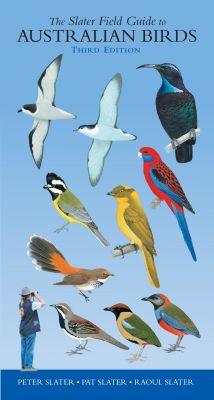Seabirds of Australia
Fold-out ID chart covering 60 species
$7.99
ISBN
9781760796426
| Format | Fold-out book or chart |
|---|---|
| Page Extent | 8 |
| Book Size | 280 x 176 x 3 mm (H x W x D) |
| Imprint | Reed New Holland |
| Release Date | 10 Jan 2025 |
| Subject Classification | Biology, life sciences / Zoology & animal sciences / Zoology: Vertebrates / Birds (ornithology) |
This eye-catching fold-out sheet is the latest addition to Reed New Holland’s exciting and easy-to-use ID-card series. It depicts a selection of the seabird species most commonly seen around Australia’s coasts.
It includes a selection of terns, gulls, albatrosses, shearwaters, petrels, cormorants and many more.
Each species has at least one eye-catching photo, while for some there are multiple images showing different plumages for adult, juvenile, male, female and so on.
The sheet covers 65 of the seabird species most likely to be encountered around Australian coasts and offshore, and groups them together for easy comparison and identification.
Each concise written account gives some facts about the bird, including its plumage, behaviour and size (measured from the tip of its bill to the tip of its tail), plus details of whether it can usually be seen close to land or far out at sea, and a listing of each state or territory where it occurs.
The card is laminated for weather- proofing and strength, giving it extra durability to withstand heavy use and being stored in a backpack or other bag.
It includes a selection of terns, gulls, albatrosses, shearwaters, petrels, cormorants and many more.
Each species has at least one eye-catching photo, while for some there are multiple images showing different plumages for adult, juvenile, male, female and so on.
The sheet covers 65 of the seabird species most likely to be encountered around Australian coasts and offshore, and groups them together for easy comparison and identification.
Each concise written account gives some facts about the bird, including its plumage, behaviour and size (measured from the tip of its bill to the tip of its tail), plus details of whether it can usually be seen close to land or far out at sea, and a listing of each state or territory where it occurs.
The card is laminated for weather- proofing and strength, giving it extra durability to withstand heavy use and being stored in a backpack or other bag.









